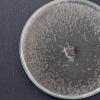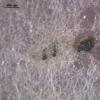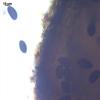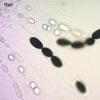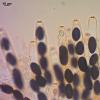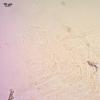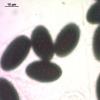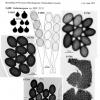
15-12-2025 15:48
 Danny Newman
Danny Newman
Melanospora cf. lagenaria on old, rotting, fallen

15-12-2025 15:54
 Johan Boonefaes
Johan Boonefaes
Unknown anamorph found on the ground in coastal sa

15-12-2025 21:11
 Hardware Tony
Hardware Tony
Small clavate hairs, negative croziers and IKI bb

15-12-2025 07:09
 Danny Newman
Danny Newman
indet. Rutstroemiaceae sp. on unk. fallen leavesMc

15-12-2025 07:05
 Danny Newman
Danny Newman
Pseudosclerococcum golindoi (det: Zotto)near Cosb

15-12-2025 11:49
 Danny Newman
Danny Newman
ITS sequences from the following two collections B

15-12-2025 12:34
 Danny Newman
Danny Newman
indet. Rhytismataceae on oak leafnear Purchase Roa

09-12-2025 12:06
 Andgelo Mombert
Andgelo Mombert
Bonjour,Je recherche l'article concernant Hypobryo
this beautiful species has appeared in culture from Ledum palustre leaf washings. I am not sure if it is a weed species of it is native to the community on this plant. Probably someone here could be interested in this species or may help me with approximate ID.
Perithecia about 0.5 mm in diameter, pear-shaped, attenuated upper part bent, with partly submerged base, brown, covered by abundant brownish mycelium.
Excipulum from angular cells, 3-5 layered in section; hyphae abundant in lower part, no seta or short hairs; asci cylindrical, about 200 mk long, 16-18 broad, with refractive ring; paraphysoid tissue abundant, from chains of inflated cells; spores ellipsoid, dark brown, spore wall with pits about 0.5 mk, 28 (24.5-31.7) x 14 (13-15), n=10.

my description matches well with the description of this species i found in the paper (Cain, Roy F. "STUDIES OF COPROPHILOUS ASCOMYCETES: I. GELASINOSPORA." Canadian Journal of Research 28.5 (1950): 566-576).
According to this saurce, the species was collected from dung and plants (seeds) before and is common in N. Canada. I had not collected this species by direct observation on the subsrate, but contamination is not high in my room (usually quite clear cultures appear) so that i think it is possible to link this species to the substrate (Ledum leaf litter).
Nina.

Matsushima has a nice photo and description of this species in his beautiful 1975 book. His isolate was from soil in Alaska. I have seen it in moist chambers of dung with Sphagnum used to maintain the humidity. It probably came from the Sphagnum, not the dung. I am certain the Sphagnum would have had a few leaves of Ledum, L. groenlandicum in our case, mixed in. Cain always used Sphagnum in his moist chambers, so it's likely that was the source of his G. tetrasperma as well.
Dave

Nice find; certainly G.tetrasperma, spore size corresponds to that given by Roger Cailleux in his very interesting article on the Central African mycoflora coprophile ( Société Mycologique de France Tome LXXXVII Fascicule 3 1971 ).
Thank you to David for his remarks in relation to the presence of Sphagnum.
Michel.

Hello David can you give me the name of the book from Matsushima.
Joop

Sorry, my mistake. The photos were of his Gelasinospora sp. MFC-2132, not G. tetraspora. The book is:
Matsushima, T. 1975. Icones microfungorum a Matsushima lectorum. Published by the author, Kobe, Japan.
It appears from Chris's illustration there is an electronic version. That's fortunate since the original is hard to find.
Dave

http://www.amazon.com/gp/offer-listing/B007UJY4LK/ref=tmm_other_meta_binding_used_olp_sr?ie=UTF8&condition=used&sr=&qid=
Chris
